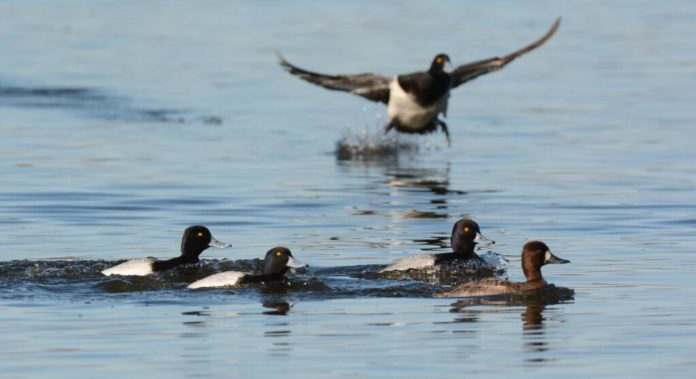Avian flu is on the rise across the southeastern U.S. The highly contagious disease has already killed hundreds of wild birds along the Atlantic Flyway, and it is now spreading to other regions of the country. The latest reports come out of North Carolina and Florida, where wildlife officials are seeing an uptick in the number of infected birds.
The fatal strain of H5N1 Avian Influenza, which is a type of “Highly Pathogenic Avian Influenza” (HPAI), was first detected in 53 wild birds in North Carolina in January. The state has since reported four more cases, including a snow goose (Hyde County), a redhead duck (Carteret County), a red-shouldered hawk (Wake County), and a bald eagle (Dare County). The snow goose and redhead duck were “observed with neurological signs consistent with avian flu” before being euthanized by North Carolina Wildlife Resources Commission staff. The hawk and eagle were already dead when found. Lab results confirmed that avian influenza was the cause of death for all four, according to the agency.
In Florida, wildlife officials reported 38 confirmed cases of HPAI in five counties (Martin, Brevard, Volusia, Charlotte and Palm Beach) with “hundreds more” unconfirmed cases, Treasure Coast Newspapers reports.
“Right now, we are still gathering as much information as possible to determine the epidemiology of this virus,” Fish and Wildlife Research Institute spokesperson Carly Jones told the Florida news outlet. “Local outbreaks are likely spurred by multiple factors, including concentrations of susceptible species.”
This is the “first known outbreak” of this avian influenza strain in the Sunshine State and, so far, it seems to mainly impact scaup and other ducks, according to Jones. Other affected birds include owls, pelicans, vultures, and bald eagles.
Cases aren’t limited to the Southeast either, and a map published earlier today shows that the disease has also spread to the Northeast and Midwest. According to USDA’s Animal and Plant Health Inspection Service, at least 24 different states have detected HPAI in wild birds.
About 75 percent of the birds exposed to the avian flu die, according to Dr. Tara Harrison, associate professor of zoo and exotic animal medicine at North Carolina State University’s College of Veterinary Medicine. While songbirds might not be as prone to the disease, hawks, eagles, vultures, crows, gulls, and ravens are incredibly susceptible to HPAI since they feed on infected waterfowl, which are the primary carriers.
Backyard chickens and ducks are also extremely at risk, as are domestic turkey and chicken farming operations. Nearly 7 million chickens and turkeys in 13 states have already been killed this year by this particular strain.
So, how do you know if a bird has been infected?

“If those birds are not acting quite right, if they are having neurologic symptoms, like a head tilt, or they’re swimming in circles, or they’re walking in a way that seems very uncoordinated. Those are all cases that we would want to be alerted to so that we could follow up on them,” NC wildlife health biologist Sarah Van de Berg told WRAL News.
As for the impact on Florida’s spring wild turkey season—which runs March 5 through April 10 for land south of State Road 70, and March 19 through April 24 for land north of State Road 70—hunters should anticipate that the season will proceed as planned.
Read Next: Avian Flu a Growing Concern in North Carolina as Officials Confirm More Cases in Wild Ducks
“We have never seen an outbreak of [bird flu] in wild turkeys, and have only documented cases that have gotten into captive facilities,” Jones said. “However, we need to consider wild turkeys, like their captive counterparts, as highly susceptible and take precautions to protect our natural populations.”
Because the virus can spread via feces—especially when people step in it and get it on their shoes—Jones recommended taking extra precautions when spending time around wild birds. People are also encouraged to report any sightings of sick or dead birds to FWC.
“We stress all citizens, regardless if they hunt, to always rinse and disinfect their shoes and boots and wash their clothes after walking through any area of high density waterfowl or seabirds,” Jones said.


